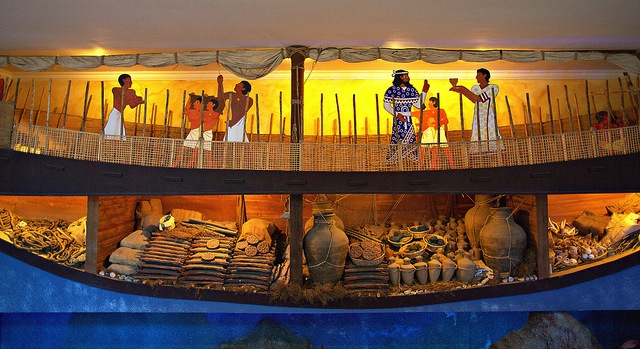
Organized by Athenian publishers Melissa, the conference will kick off a yearly series of scholarly events dedicated to its late founder, Giorgos Ragias, the news agency ANSA reported.
At the conference titled ‘Bringing History’s Most Ancient Wreck to the Surface: a Late Bronze Age Shipwreck from Uluburun in Turkey, Pulak will discuss the discovery of the ship that sank towards the end of the 14th Century B.C. off the shores of the town of Uluburun, in the vicinity of Antalya on Turkey’s southwestern shore.
According to scientists, the 15-16 meter ship was carrying products from nine different European and African cultures, from Sicily to Mesopotamia. It probably set sail from Cyprus, Syria, or what is now the Gaza Strip, and was en route to the island of Rhodes, a key Aegean Sea trading hub at the time.
Sponge diver Mehmet Cakir first saw the wreck lying on the seabed 50 meters below in the summer of 1982. From 1984 to 1994, 11 campaigns of three to four months’ duration totaling 22,413 dives took place, revealing one of the most spectacular Late Bronze Age assemblages to have emerged from the Mediterranean Sea. When the ship was recovered in September 1994, it was analyzed by the Bodrum Institute of Marine Archeology.
Its cargo, one of the most complete ever to be recovered from a single location, included 10 tons of bronze ingots, a ton of tin ingots, gold and ivory ornaments, 175 bars of glass – the most ancient and complete glass quantities discovered to date – ostrich eggs, terracotta vases from Cyprus and the Middle East, fruit, olives, almonds, and a bronze statuette of a goddess, the ship’s protector. Based on seals, swords and pearls found on board, scientists also believe at least two of the passengers were of Mycenaean origin.
See all the latest news from Greece and the world at Greekreporter.com. Contact our newsroom to report an update or send your story, photos and videos. Follow GR on Google News and subscribe here to our daily email!



